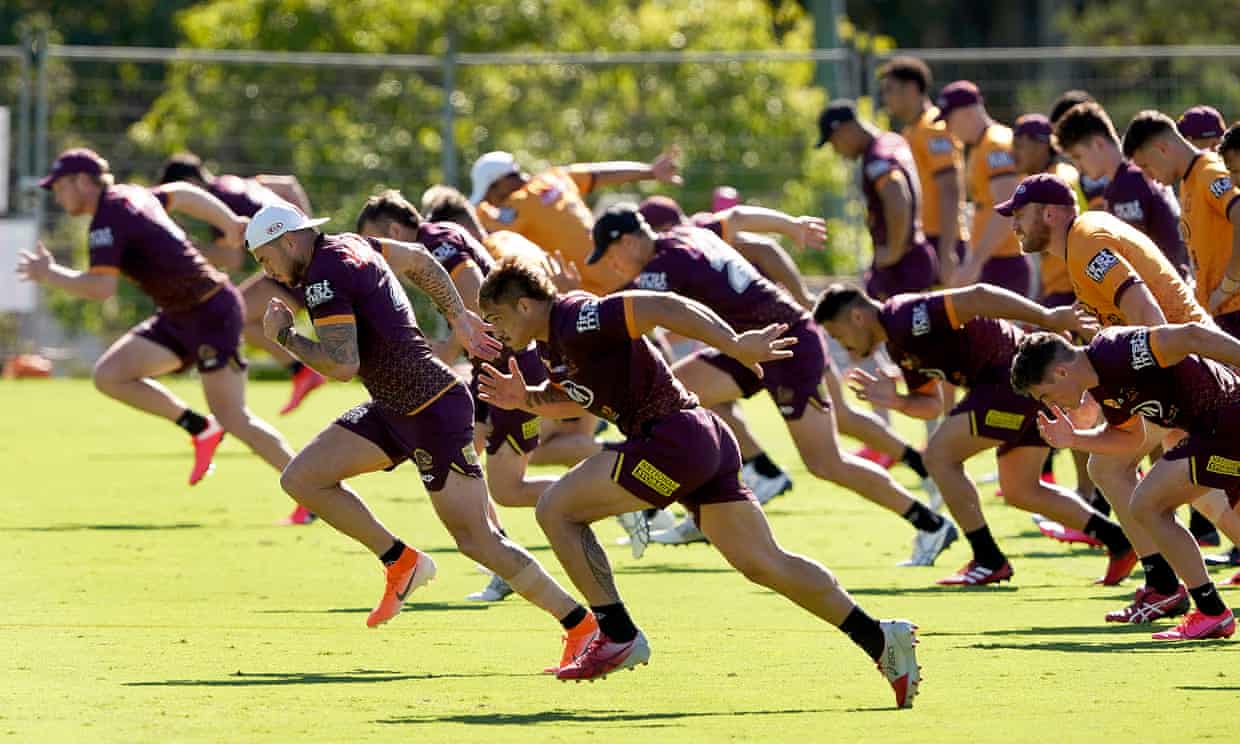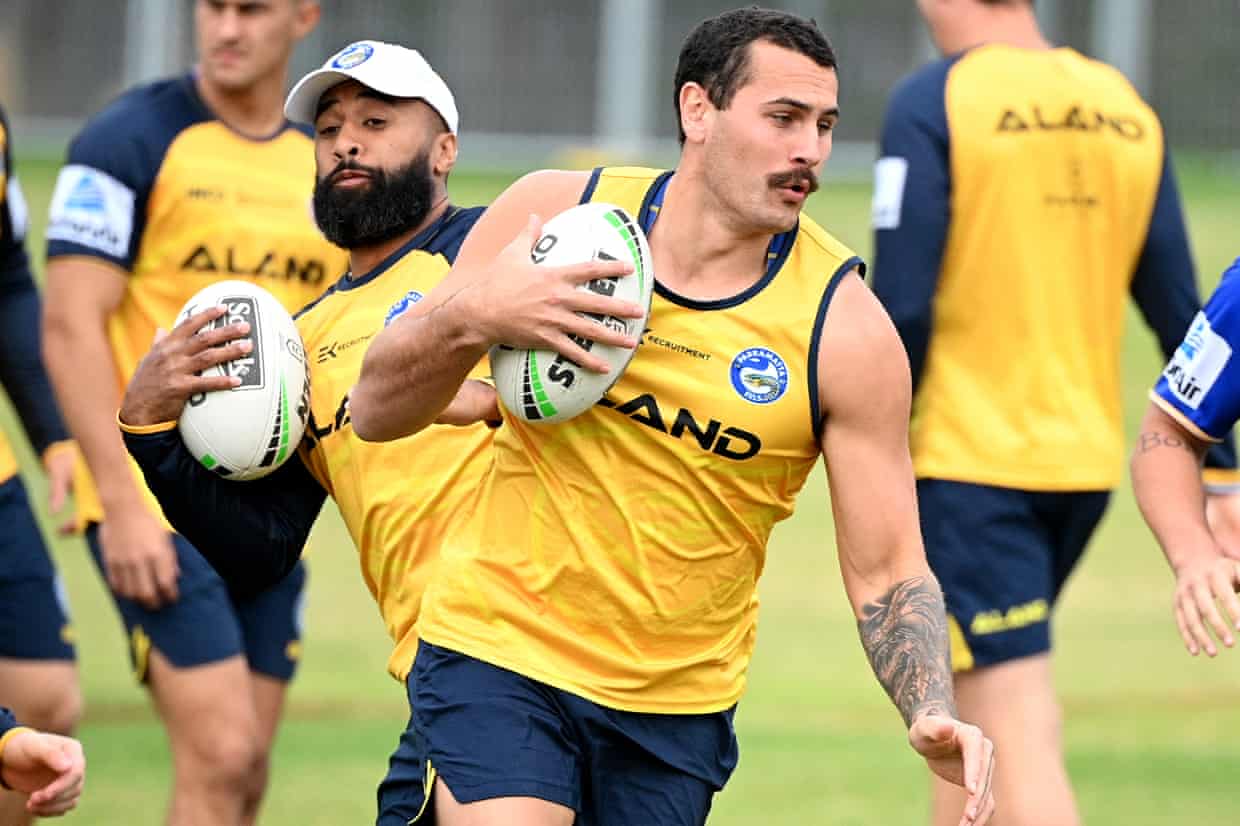
NRL
NRL takes centre stage as game returns with a Covid-19 era twist
The most anticipated rugby league restart since the end of the Super League era arrives with a new look and a hint of trepidation
by Larissa O’ConnorThe most dissected and debated recommencement to Australian sport is finally upon us. It has been no easy course, but when the Broncos and Eels run out to an empty Suncorp Stadium on Thursday night, the NRL will become the first major sport in Australia to return to the field, despite no end in sight to the Covid-19 pandemic.
The NRL’s steadfast yet inventive strategy, which drew plenty of criticism at a time when the general population remained in lockdown and government-endorsed health officials warned against the resumption of competition, has paid off.
Loose asteroids have threatened Project Apollo’s 28 May resumption date along the way – a fallen CEO, multiple counts of player misconduct, the refusal of players to vaccinate and potential industrial action by referees. But eight weeks on since round two ended, a new-look competition with a hint of Back to the Future about it is ready to get underway.
From Thursday night, the game will be adjudicated by a single referee for the first time since 2008; an adjustment welcomed by many fans and one that will net savings for the cash-strapped NRL. The instant halving of the number of referees will come at a cost though; Belinda Sharpe, who made history as the first woman to referee an NRL game in July, is among those relegated to the touchline. Yet fans have been left to ponder whether these highly qualified touchies could give way to a revival of the once effective sideline official.
New to the NRL rule book is the awarding of six additional tackles for ruck infringements. The change was trialled back in 2012 in a high-scoring Indigenous All Stars game, but shelved ever since. For current players, the new law is virtually untested and teams would be well advised to watch the early games this round to gauge how the rule will be enforced, how it may open up attacking opportunities and to what extend it could wear down defending sides, particularly in the latter stages of a game.
Overall, player fitness is questionable – and not just in the face of the newly legislated 12-tackle set in defence. At the cessation of competition in March, players used to training as a collective were moved to a program of virtual and isolated sessions. Restrictions which prevented tackling were only lifted in the past fortnight, leaving clubs attending to the current casualties of a second, more intensive pre-season and nervous as to what injuries may be generated in the re-opening rounds.

Compounding the issue of fitness is the unknown effect of the lower grades (particularly NSW Cup) being cancelled for 2020. With clubs having a 30-player squad, there are enough players to draw from, but the elite grade will not be supported by a match-fit emergency talent pool as it has in the past. Further, for the first time, the club’s regular starting line-up now face at least 18 consecutive rounds of play – no byes or split rounds to undergo a mid-season rejuvenation.
By far the most controversial of the Covid contingencies is the reduction of NRL grounds in use and the lack of fans in attendance. Nearly 20 traditional home grounds have been reduced to just six through to round nine with five teams – Brisbane, North Queensland, Parramatta, Melbourne and West Tigers – to play out of their traditional home grounds. For these teams, particularly the Storm and Cowboys who have the luxury of not sharing their base, the decision is likely to provide a huge logistical advantage at the very least.
While the NRL embarks on its next mission – to have spectators return by 1 July – the home advantage of once-feared fortresses will be examined in a new light, given they continue to be void of spectators. Of the eight teams with the highest winning percentage at home over the past five years, Melbourne, Brisbane and Parramatta look to have the advantage in retaining their traditional home ground, but will these statistics hold true in 2020?
Germany’s Bundesliga, the first European football league to return to competition during the pandemic, tells a different tale. In the first 22 games since the competition restarted at fan-less stadiums this month, only three teams have won at home.
Undoubtedly, at a distinct disadvantage are the New Zealand Warriors who left their homeland and families to set up camp in Tamworth before moving closer to their assigned home ground in the Central Coast last week. Similarly, the Canberra Raiders have been allocated to the nearest stadium, Campbelltown, albeit two-and-a-half hours away.
To add to the logistical headaches are interstate border restrictions that have necessitated the need for teams to fly in and out on game day. It’s another unfamiliar twist for players and officials and apart from a physical toll, the mental toll resulting from the strict contingencies and complete change to usual conditions of operation is yet to be realised.
This could be the most anticipated re-start since the NRL kicked off in 1998 following the end of the Super League era. There has been debate around whether the season needs to have an asterisk placed next to it, but with no simple footnote or explanation, it certainly will not be forgotten about.
- Follow the resumption of competition with the Guardian’s liveblog on Thursday night, when the Broncos take on the Eels at Suncorp Stadium. Kick-off is at 7:50pm AEST, 10:50am BST.